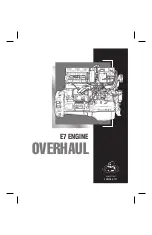
Before starting work, pay attention to the following:
• Vent the installation/removal device, the pumps and the pipework at the relevant designated points.
• For hydraulic installation, screw on the tool with the piston retracted.
• For hydraulic removal, screw on the tool with the piston extended.
For a hydraulic installation/removal device with central expansion pressure supply, screw spindle into shaft
end until correct sealing is established.
During hydraulic installation and removal, ensure that nobody is standing in the immediate vicinity of the
component to be installed/removed.
Working with batteries
Observe the safety instructions of the manufacturer when working on batteries.
Gases released from the battery are explosive. Avoid sparks and naked flames.
Do not allow battery acids to come into contact with skin or clothing.
Wear protective clothing, goggles and protective gloves.
Do not place objects on the battery.
Before connecting the cable to the battery, check the battery polarity. The battery may explode and spray
acid if the battery terminals are connected incorrectly.
Working on electrical and electronic assemblies
Always obtain the permission of the person in charge before commencing maintenance and repair work or
switching off any part of the electronic system required to do so.
De-energize the appropriate areas prior to working on assemblies.
ESD: Work on electrostatically endangered components which could be damaged by electrostatic discharge
(ESD) must always be carried out with appropriate equipment. Appropriate equipment is e.g. electrically con-
ductive work surfaces or antistatic wristbands.
Do not damage wiring during removal work. When reconnecting, ensure that cabling cannot be damaged dur-
ing operation by:
• Contact with sharp edges
• Chafing on components
• Contact with hot surfaces.
Do not secure cables on lines carrying fluids.
Do not use cable ties to secure lines.
Always use connector pliers to tighten union nuts on connectors.
Subject the device as well as the product to functional testing on completion of all repair work. The emergen-
cy stop function must be tested in particular.
Store spare parts properly prior to replacement, i.e. protect them against moisture in particular. Package
faulty electronic components or assemblies properly before dispatching for repair:
• Moisture-proof
• Shock-proof
• Wrapped in antistatic foil (as necessary)
Working with laser equipment
Work with laser devices shall be carried out by trained and qualified personnel only. Follow the safety in-
structions in the manufacturer's user manual when working with laser equipment.
Wear special laser safety glasses when working with laser equipment (danger of concentrated radiation).
Laser equipment must be fitted with the protective devices necessary for safe operation according to type
and application.
14 | Safety | MS150098/02E 2016-11
TIM-ID: 0000040535 - 015















































